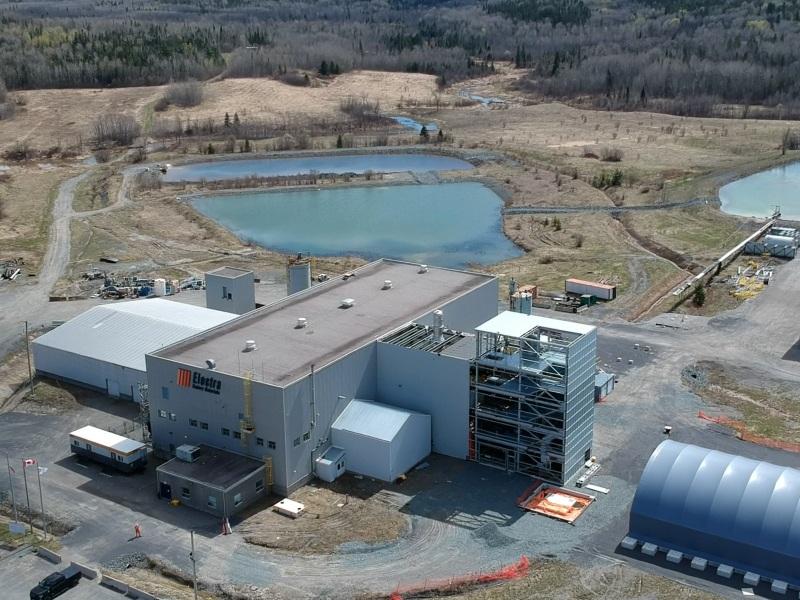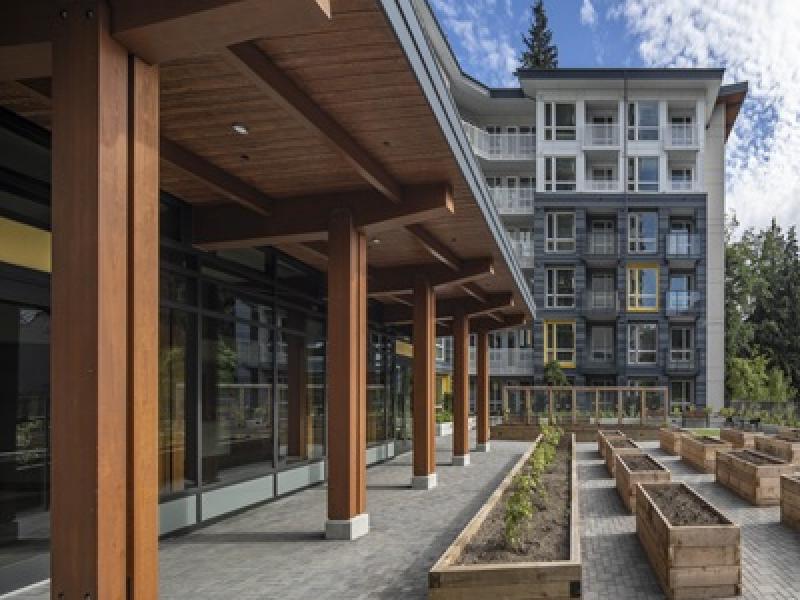
The Canadian sustainable finance market issues approximately $50 billion per year, and focus has been shifting to climate adaptation, according to panelists at a REALPAC webinar on low-carbon financing options for the commercial real estate (CRE) industry.
“Rebuilding is the most common use of proceeds for real estate companies when they go to market with a list of proceeds financial instruments. But there's other use of proceeds," Fanny Doucet, Scotiabank’s managing director and head of sustainable finance said during the Low Carbon Financing Options for CRE webinar in March.
"There's energy efficiency, and one that I think has been more and more focus lately is climate adaptation.”
Doucet said the impacts of climate change are being felt right now with potentially "huge impact on our building infrastructure in other countries." She asked in response: "How are we preventing damage? How are we preparing our buildings stock?"
Panelists included Aaron Berg, the director of energy efficient investments for the Canada Infrastructure Bank (CIB); Stuart Galloway, the executive vice-president of Ontario and Western Canada for SOFIAC; Darryl Neate, vice president of ESG at REALPAC; and Susan Thompson, TD Securities’ director of ESG solutions.
The Real Property Association of Canada (REALPAC) brings together top-tier executives from the country's commercial real estate industry. Members include publicly companies, real estate investment trusts (REITs), pension funds, private companies, fund and asset managers, developers, government agencies, lenders and more, who represent in excess of $1 trillion in assets under management.
Members represent all CRE asset classes — office, retail, industrial, apartment, hotel, seniors residential and other sectors.
As part of its role, REALPAC is also providing leadership in the sustainability and ESG sectors through committees comprised of many of Canada's senior industry executives.
Is real estate ahead or behind?
The panelists largely agreed the question of whether the real estate sector is ahead or behind the curve regarding sustainable finance depends on the organization. As Galloway explained, every company is trying to study its portfolio to determine a good plan.
“. . . and then link that to carbon studies to, ‘Oh, I've now got this ESG reporting and somebody's told me I've got to get to net-zero by 2040. So bundling all of that into one big piece of soup has, I'd say, actually slowed the market down slightly,” he said.
According to Thompson, green bonds are by far the most prominent sustainable financing vehicle in the real estate sector.
“(In) Canada, we actually saw a year-over-year gain in sustainability-linked loans in the REIT sector. We've seen less traction on the bond side on the sustainability-linked bond front versus other industries,” she said, "and it's just because buildings and the real estate sector are so . . . I guess they fit in better with the use of proceeds just given the categories of energy efficiency and rebuilding.”
With retrofits and upgrades working well within the green bonds sector, Doucet and Thompson believe the next challenges are in measuring hard-to-determine data such as Scope 3 and embodied carbon emissions.
The panelists acknowledged current market volatility has also had an impact on sustainable finance.
Opportunities and risks
The opportunities in real estate are similar to the risks. Companies have the chance to modernize their assets to align with the energy transition, but the risk is that they can be left behind if they’re not fast enough.
“I think there's a supply and demand risk, where if you wait too long and don't act, then you could end up behind the wave and have a hard time catching up, because the supply side will be busy,” Berg said.
“Modernizing buildings for the early actors, there could be exacerbated supply-chain issues, like we saw in COVID. So I think early action is the opportunity, improving the valuations of your assets through modernization."
Canadian Infrastructure Bank building retrofits initiatives
The CIB has closed $900 million in investments under its building retrofits initiative. Berg also mentioned bank participation agreements as a type of loan the CIB hopes will be an emerging product.
He said the CIB has begun building mechanisms into its credit agreements to anticipate the benefits of incoming tax credits, like with heat pumps.
Doucet discussed the opportunity in sustainable financing to receive capital, which might otherwise be out of reach, via ESG-focused funds. For example, Scotiabank has a $350-billion commitment to climate-related financing by 2030.
Another risk specific to real estate and sustainability is the time it takes to see a return on investment.
“Traditionally, real estate, or a lot of organizations, it's not just limited to real estate, won't invest past five years with payback,” Galloway said. “They don't want to do the big greenhouse gas emissions reductions, which is like 15, 20 years worth of payback, because they don't know if they're going to keep the building.”
Guarding against greenwashing
Doucet spoke about the importance of guarding against greenwashing in sustainable finance.
“Putting additional guard rails for the market to make sure it continues to grow in a robust and credible way is really important,” she said. “So I do think that the SPOs (second party opinions) are actually going to grow in popularity.
"It's definitely a requirement for bonds. We're seeing it on some transactions.”










